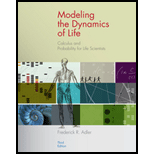
To graph:The function
Explanation of Solution
Given information:
The function
Graph:
Consider the provided function
Evaluate the first derivative of the function.
Apply the
Simplify it further as,
Recall if first derivative of the function is greater than zero that is
If first derivative of the function is less than zero that is
The first derivative is positive if,
The function is increasing if
The first derivative is negative if,
The function is decreasing if
Therefore, the function is increasing when
Evaluate the second derivative of the function, differentiate first derivative again with respect to x .
Apply the quotient rule of differentiation,
Apply the product rule,
Simplify it further as,
If second derivative of the function is greater than zero that is
If second derivative of the function is less than zero that is
The second derivative is always positive so the function is always concave up.
Therefore, the graph of the function

Interpretation:
Observe that first derivative of the function is
Therefore, the function
Next observe that second derivative of the function is
Thus, the function,
Want to see more full solutions like this?
Chapter 2 Solutions
Modeling the Dynamics of Life: Calculus and Probability for Life Scientists
- Determine whether each of the following statements is true or false, and explain why. The only function that is its own derivative is ex.arrow_forwardYOUR TURN For the graph of f(x)=x2x, a find the equation of the secant line through the points where x=2 and x=1, and b find the equation of the tangent line at x=2.arrow_forward
 Calculus For The Life SciencesCalculusISBN:9780321964038Author:GREENWELL, Raymond N., RITCHEY, Nathan P., Lial, Margaret L.Publisher:Pearson Addison Wesley,
Calculus For The Life SciencesCalculusISBN:9780321964038Author:GREENWELL, Raymond N., RITCHEY, Nathan P., Lial, Margaret L.Publisher:Pearson Addison Wesley,
